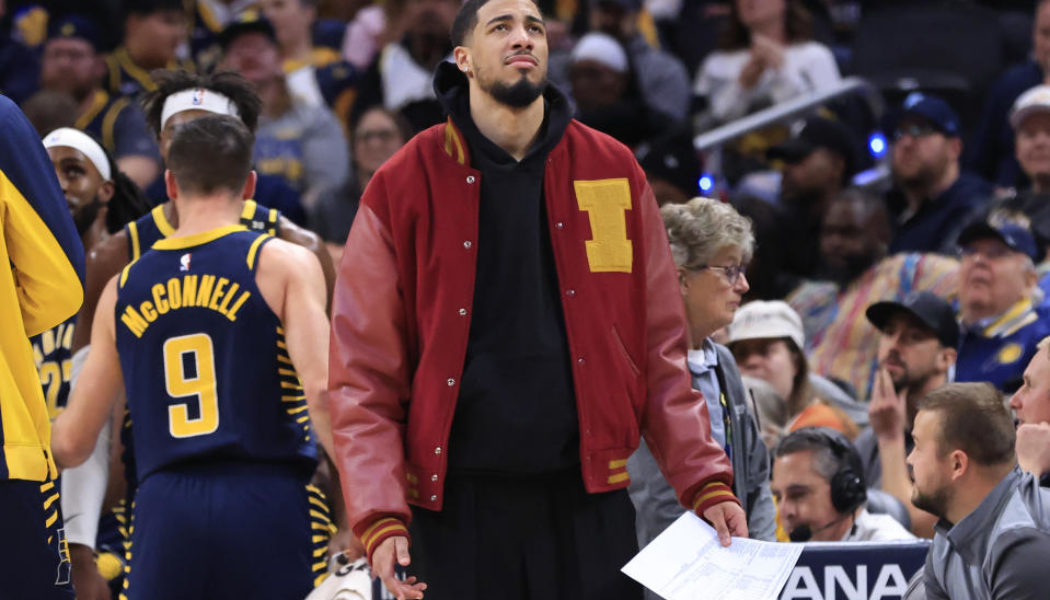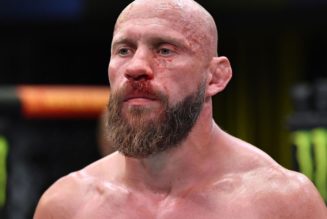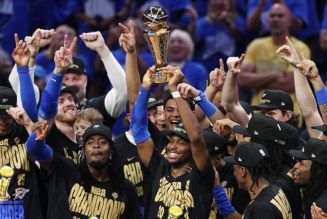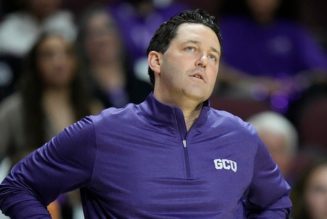The NBA playoffs officially begin this weekend. This is the time every fan has been waiting for and every team has been preparing for. This is when teams want to be at their healthiest and playing their best ball. At the Board of Governors news conference last week, NBA commissioner Adam Silver pointed out the “good news” that stars missed about 15 percent fewer games in the first season of the NBA’s Player Participation Policy.
But, while it’s true that stars played more in the regular season as a whole, there’s reason to worry about the state of player health entering the postseason. Stars like Giannis Antetokounmpo, Karl-Anthony Towns and Joel Embiid seem to have stumbled to the finish line. And now, with their teams’ fates in the balance, Zion Williamson and Jimmy Butler are expected to miss multiple weeks at the worst possible time.
For a moment, it seemed the NBA’s Player Participation Policy worked. But the real test is upon us.
The up-and-down regular season
For years, the NBA had been fighting the load management problem — the sticky reputation that its star players sit too much during the regular season. Rather than cut games from the schedule to eliminate back-to-backs, the NBA made a deal with the players union. Ahead of the NBA’s negotiations on a national media deal, the league came to an agreement with the NBPA on the first ever Player Participation Policy that encouraged its biggest names to suit up more than they had in the past.
As part of the new decree, the NBA instituted a controversial 65-game rule in order to qualify for certain end-of-season hardware like MVP, Defensive Player of the Year and All-NBA squads. The league also implemented stricter rules surrounding national TV games and established protocols to review questionable absences.
The NBA threaded a very tight needle. How could it motivate star players — and the teams’ medical staffs managing the bodies of those star players — to play more without jeopardizing their long-term health? After all, teams don’t rest their stars for the sake of it. It’s a matter of game prioritization. The idea is to strategically miss less important regular-season games in order to raise the chances of playing when the games really matter (i.e. the postseason) and down the road (career maximization).
From the league’s standpoint, there was too much slack in the system. Perhaps stars would play more if they were nudged a bit. A carrot of award qualification might be the nudge they needed. Many inside the league wondered if that would be enough to see any real impact. Indiana star Tyrese Haliburton, who has 40 million reasons to not be happy with the new PPP, called the rule “stupid.” From my reporting earlier in the season, teams were widely skeptical that the PPP would do much.
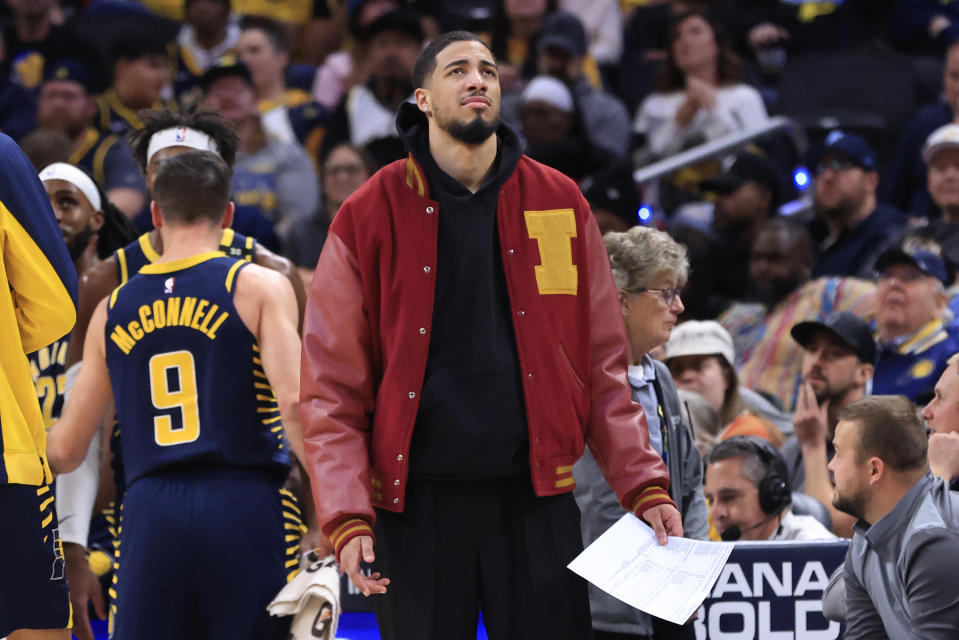
But the data is in, and NBA stars played significantly more this regular season.
In this case, star players are defined in the PPP as players who had earned All-Star or All-NBA recognition in the previous three seasons. Looking at the numbers, NBA stars played about 75 percent of their games — or three out of every four games — in the previous three 82-game seasons heading into 2023-24.
This season: NBA stars played 85 percent of their games, up 10 percentage points compared to the benchmark. And that’s including players like Ja Morant, Ben Simmons and LaMelo Ball who rode the pine for the majority of this season.
The game’s biggest names led the way. LeBron James played 71 games, up from 55 last season. Stephen Curry played 74, up from 56. Kevin Durant played 75, up from 47. On average, stars played 65 games this season, up from 60 games last year.
Star players hampered by the injury-prone label like Zion Williamson, Anthony Davis and Kawhi Leonard were dazzling in front of fans more often. Williamson, the Pelicans star, set a new personal record with 70 games this season, leading New Orleans to its best record since taking on the Pelicans name in 2013-14. For his part, Davis played in 76 of the Lakers’ 82 games, never missing more than two games in any stretch. Though Leonard hurt his knee at the end of last season, few could have expected him to reach 68 games this season after missing 30 games last season and the entirety of 2021-22 with an ACL tear.
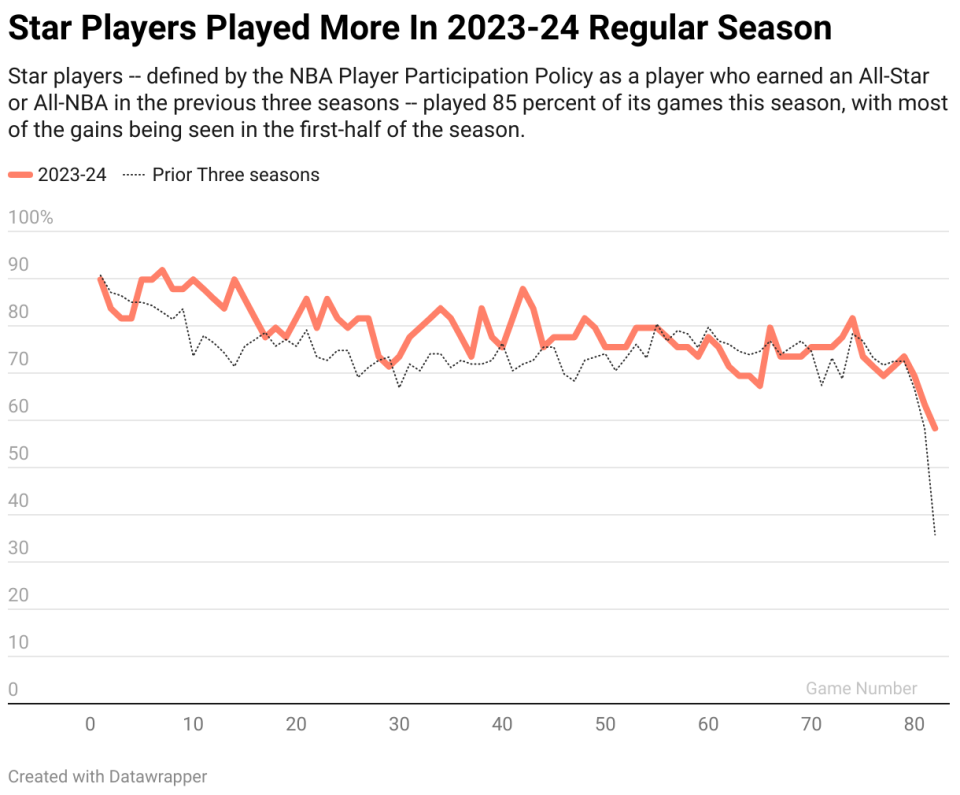
That’s the good news. The bad news is that most of those gains occurred in the first half of the season. Like most things in the medical field, it’s complicated.
The league’s internal study
Ahead of the season, NBA executive vice president and head of basketball operations Joe Dumars spoke with reporters about the load management issue, claiming that the NBA had actually run a study that showed resting strategies didn’t correlate with fewer games missed due to injury.
This was a big surprise around the league. For years, teams’ medical staffs had managed fatigue-related injuries by strategically sitting players in order to maximize their playing potential later in the season. Time and time again, Silver backed those teams publicly. At the 2015 Finals, Silver endorsed teams’ “sophisticated” use of load management:
“I think it’s something that the league and the teams are spending enormous resources on for best‑of‑kind medical care, best‑of‑kind science to see what we can do to prolong players’ careers and keep them on the floor longer,” Silver said. “One of the things we know we think will make a difference is to reduce the number of back‑to‑backs and to create more rest for players. Some of that is done by teams in a very sophisticated way, managing minutes.”
Dumars’ comments in October represented a sharp U-turn from the league office. The NBA didn’t share the data Dumars referenced, or the results of the study, with teams until months later in January.
Once the data was ready to be shared internally, I was among the media members invited by the NBA to speak with the folks behind the league’s study. Participating in the media conference were the NBA’s senior vice president of player patters Dave Weiss and Dr. John DiFiori, the NBA’s director of sports medicine. In addition, the NBA presented the data with Dr. Christina Mack and Dr. Mackenzie Herzog, epidemiologists from league partner IQVIA, which helped conduct the research. From the jump, Weiss established that this study was run at the request of the NBA’s competition committee. They wanted to know: What does the league’s data show about the relationship between player participation and injury?
The NBA’s researchers ran the numbers and struggled to find any connection between load management and injury rates.
“We have not historically seen evidence demonstrating that load management through reduced game participation reduces injuries,” Weiss said. “To be clear, we also lack evidence that load management fails to reduce injuries.”
In other words, it was inconclusive either way.
The 57-page PDF shared with teams and reporters contained enough charts and figures to make a Ph. D student weak in the knees. On the Executive Summary page, it pointedly read: “Results from these analyses do not suggest that missing games for rest or load management — or having longer breaks between game participation — reduces future in-season injury risk.”
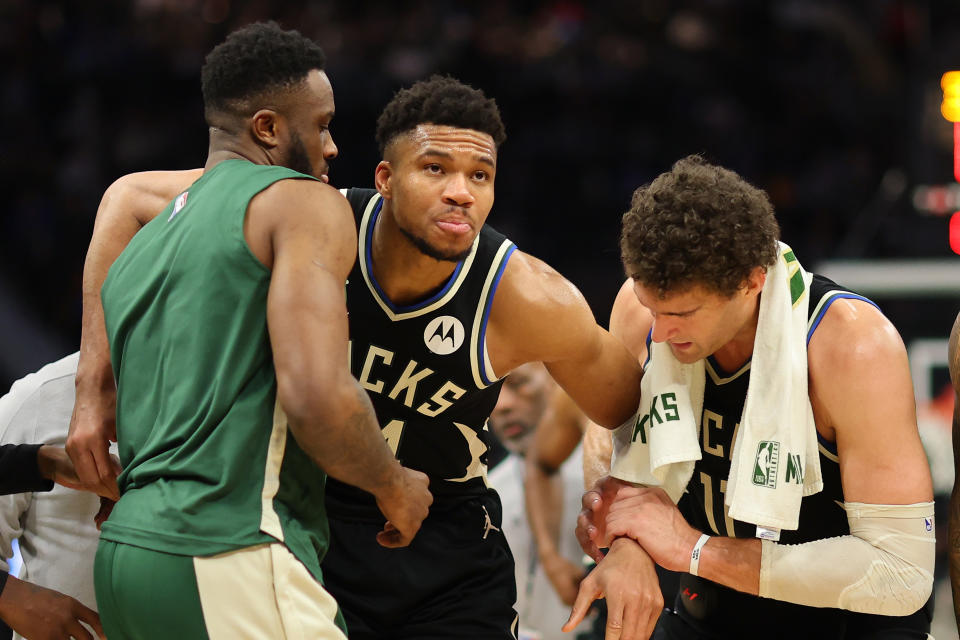
But again, they stopped short of suggesting that resting strategies don’t work. It’s just they couldn’t find a strong signal either way. I asked if they’d go so far as to say that the NBA should add more back-to-backs to the schedule given Dumars’ comments and their research conclusions. They didn’t see such a recommendation as part of their scope.
Dr. DiFiori did point out some limitations of the study, namely that it didn’t analyze career length or practice data. Teams collect data on non-game events like practice and shootarounds, but the NBA wasn’t able to access that data for every team. The NBA also said it wasn’t able to include key information like diet, sleep or mental stress that could impact a team’s decision to sit a player.
Studies like these can only glean so much from the injury data, which, according to medical staffers around the league who spoke to Yahoo Sports, has varied levels of accuracy and consistency across teams. As such, teams have resisted drawing grand conclusions from league-wide data. “Garbage in, garbage out,” said one longtime general manager. For instance, if a player tore his ACL in the team’s final game of the season, this would count as zero games missed due to injury, which is obviously problematic for anyone trying to understand the nature of injuries and participation.
This isn’t just an abstract hypothetical. In 2016, Memphis Grizzlies guard Mario Chalmers tore his Achilles during a game against Boston in March. The team waived him the next day. Since he was no longer on the team and was waived before he missed any games, his games lost due to injury tally would show up as zero. (Chalmers missed the entire next season recovering from the rupture; the Grizzlies signed him a year later and Chalmers played one final season at age 31).
For the first four months of the season, it appeared that teams were heeding Dumars’ call for more participation. Game play among stars hovered between 80 and 90 percent for the opening stretches of the schedule. And then, after the All-Star break, a string of high-profile injuries began to hit some of the league’s top players.
The real test
It may not feel like stars are playing more. That’s probably a result of the high-profile injuries in the second half of the season. The play-in tournament has already been stained by untimely injuries. On Tuesday, Williamson’s hamstring buckled in the closing minutes of a 40-point masterpiece, and the Pelicans couldn’t hold on against the rival Los Angeles Lakers. Butler’s knee twisted awkwardly in the first half, and he was clearly hampered the rest of the night. After the Heat’s loss in Philadelphia, The Athletic’s Shams Charania reported that Butler is expected to miss multiple weeks with an MCL injury.
“It felt like I couldn’t do too much, which sucks with the timing of the game and everything,” Butler told reporters after the game.
At the dawn of the playoffs, it’s fair to say that the Player Participation Policy won’t feel like a success if the postseason is defined by injuries.
To gauge a benchmark, injury expert Jeff Stotts of InStreetClothes.com shared some data with Yahoo Sports that shows games lost due to injury last postseason declined considerably compared to years prior, down to 199 or about 2.37 player games per team playoff game. Four years ago, that number ballooned to 3.35.
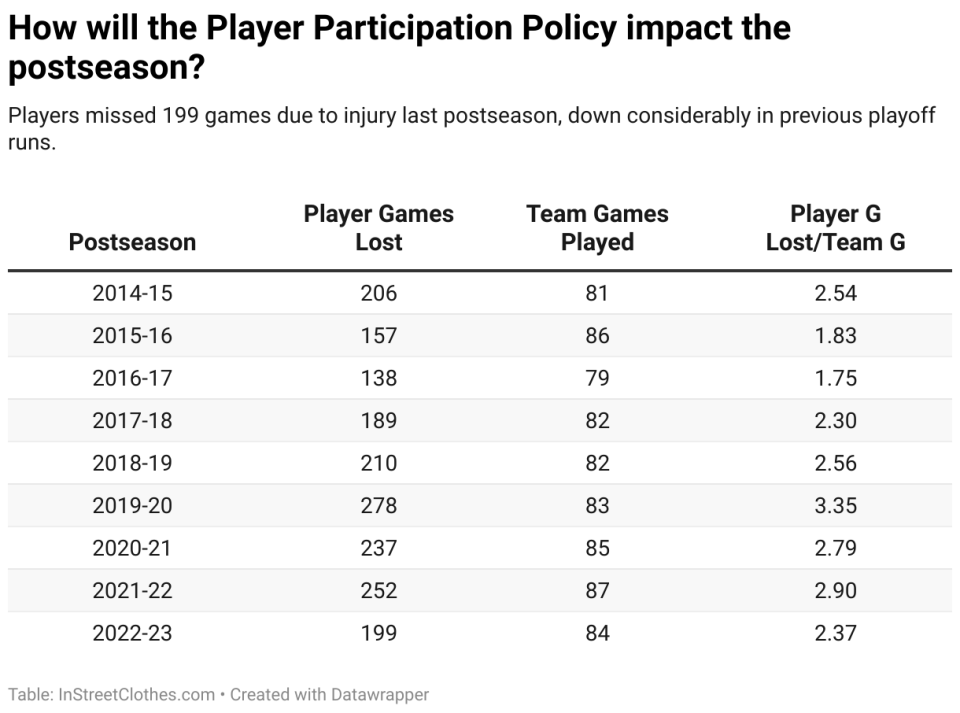
Though not every injury can be prevented, they are piling up. After not missing a single game all season, Julius Randle suffered a shoulder injury in late January and called off the season in early April. Towns tore his meniscus and missed a month. Embiid, days after scoring 70 points in a game, tore his meniscus and missed two months. Shai Gilgeous-Alexander was the leading MVP candidate in some circles before an ill-timed quad injury forced him to miss almost two weeks down the home stretch. Though technically not a star by the NBA’s standard, Jamal Murray missed two weeks in the closing month of the reigning champs’ season.
Over in Milwaukee, the Bucks’ star trio has barely played together under Doc Rivers, and the latest injury couldn’t have happened at a worse time. Antetokounmpo will be sidelined for the foreseeable future with a calf strain suffered on national TV during the Boston game on April 9. Antetokounmpo’s injury is an example of some of the negative externalities of the 65-game rule. The two-time MVP had been dealing with soreness in that area dating back to March 4, when he missed a Clippers game with what was termed left Achilles tendinitis. At that point, Antetokounmpo had played 59 games and needed six more games to qualify for an MVP award that was within his grasp.
It’s hard to distill how much the MVP conversation or the PPP factored into his decision to play. In any event, Antetokounmpo missed just one game with the Achilles injury label. Then, a hamstring injury in the same leg popped up. Antetokounmpo missed only two games with that. He kept powering through — until his calf gave out in a non-contact sequence — and is reportedly out for the beginning of the Bucks’ first-round matchup against the Indiana Pacers, and possibly longer.
This is the crux of the load management problem. The tradeoff has always been: take some games off now in order to play in the biggest games later.
In mid-March, Milwaukee coach Doc Rivers was asked about Antetokounmpo fearlessly playing through injuries. Rivers supported Antetokounmpo’s willingness to fight through the pain but also offered this message about the big picture:
“Hey, love the heroes,” Rivers said. “I just don’t like heroes in March. I like them in June.”
Services Marketplace – Listings, Bookings & Reviews
